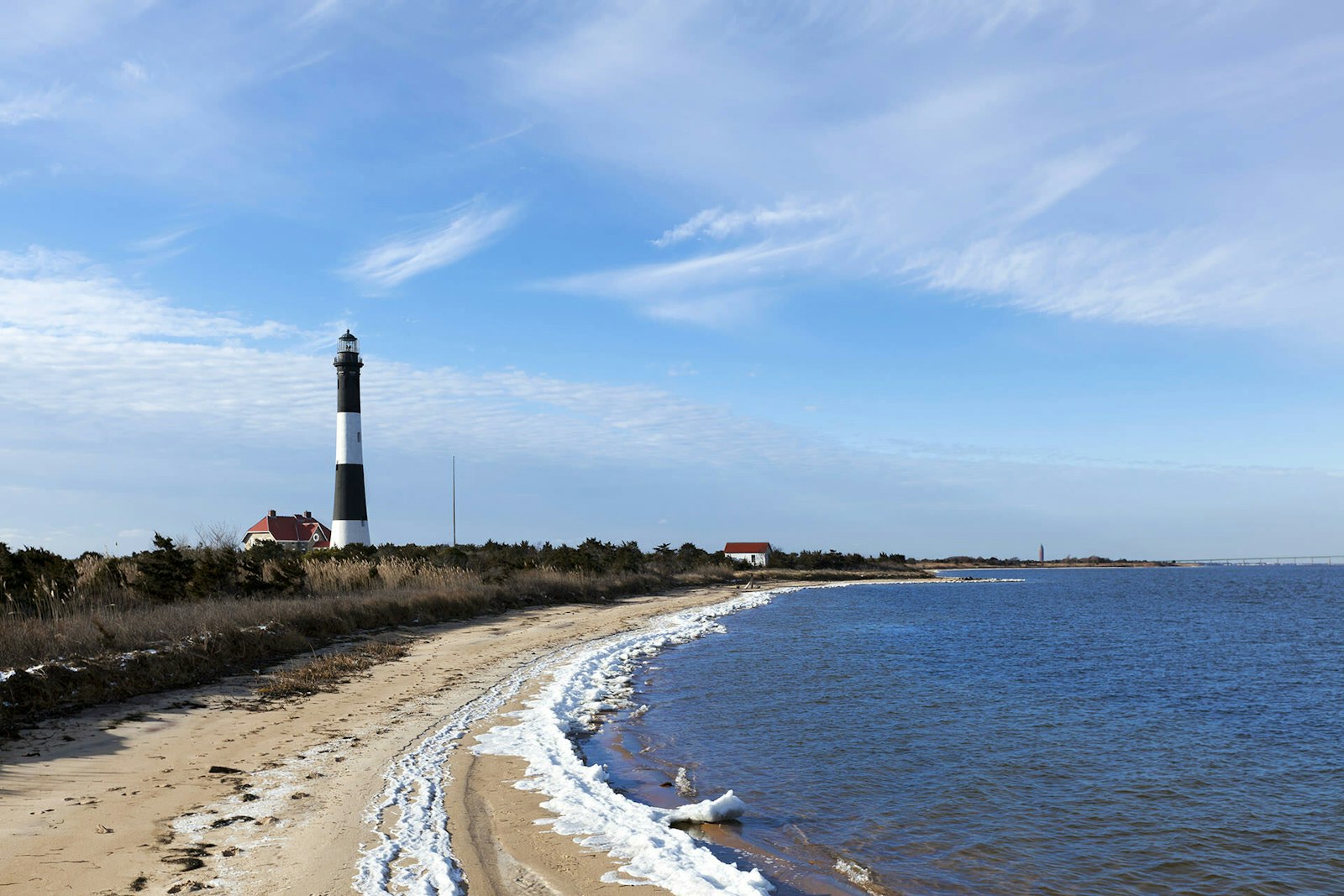
Fire Island National Seashore
Fire Island, just one hour east of New York City, has been a special place for diverse plants, animals, and people for centuries. Far from the sounds and pressures of nearby big-city life, Fire Island National Seashore's dynamic barrier island beaches offer solitude and camaraderie, and spiritual renewal to civilization-weary people.
Fire Island offers visitors many types of relaxation and educational opportunities. 26 miles of pristine ocean shores, an ancient maritime forest, legacies of lighthouse keepers, and the historic estate of William Floyd, one of New York's four signers of the Declaration of Independence, are just a few of the recreational, natural, and cultural resources of Fire Island National Seashore.
Fire Island has also long been home and haven to LGBTQ visitors and residents alike and includes two sites on the National Register of Historic Places in part because of their role in LGBT history: The Carrington House and the Cherry Grove Community House and Theater. The Carrington House is a beach bungalow, built in 1909 and purchased by Frank Carrington in 1927. Carrington hosted many well-known members of the LGBTQ community, including Truman Capote and his partner Jack Dunphy, and is said to be where Capote completed his Breakfast at Tiffany's.
The Cherry Grove Community House and Theater was originally constructed on Long Island and later floated across the Great South Bay to serve as the community house for the Cherry Grove Property Owners Association, Inc. in 1944. In 1948, a small stage was added and the site became home to the Arts Project of Cherry Grove. Together, the Cherry Grove Property Owners Association and Cherry Grove Arts Projects greatly influenced the community’s development and integrated Cherry Grove’s LGBTQ residents into the community’s governing affairs and civic life, making Cherry Grove the one of the first and, for many years, the only gay and lesbian influenced geography in the United States.
Park Updates
-
UpdateStrengthening Park Partners